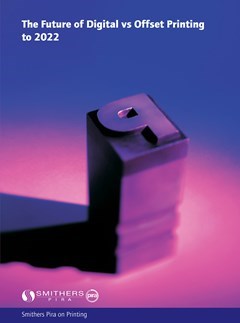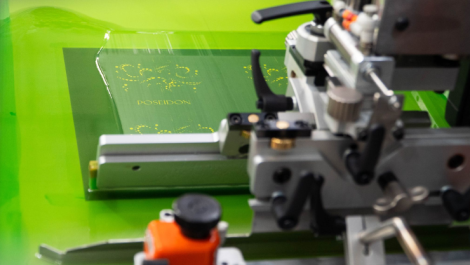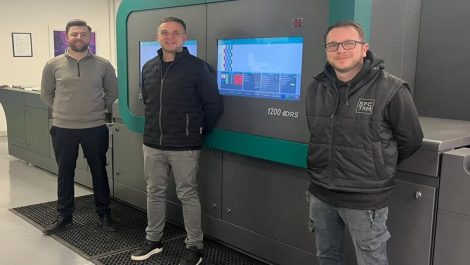Recently published research from Smithers Pira shows that digital printing will grow in most print sectors across the world over the next five years, whilst offset litho will decline in value.
According to The Future of Digital vs Offset Printing to 2022, a report from Smithers Pira, in 2017 digital printing will account for 16.2% of the global print market value and 2.9% of the volume. This is up from 2.1% of the volume in 2012, and the transition is accelerating to 3.9% of volume by 2022.
The report, which uses primary research, together with cross-checking against secondary sources, forecasts that digital (toner and inkjet) process will see the fastest growth between 2017 and 2022, while flexography in packaging will have a moderate expansion and the previously dominant offset litho will decline in terms of value.
In 2017, litho still dominates the world print landscape in terms of the number of pages printed, and by 2022 it will still account for over 70% of the world print output, but much litho print is relatively low-value publication printing – such as newspapers, magazines and directories – which are falling, while the most lucrative opportunities lie in value-adding work using digital print.
Workflow developments are lowering the transaction costs associated with print, opening new market opportunities to individuals and micro-businesses. Sheet-fed litho has benefited, as printers group jobs together on large sheets to share set-up costs. High levels of automation are reducing set-up times and waste, making litho more cost-effective against cut-sheet colour toner presses. These incremental developments are mirrored across all printing processes.
The biggest changes are in inkjet, where the achievable quality has greatly improved, along with the reliability and consistency of the printing. The development budget in inkjet dwarfs all other technology developments in printing and packaging and this will continue. Single-pass sheet-fed and web-fed presses are now available and are firmly aimed at most printing applications.
Author of the report Dr Sean Smyth stated, ‘The relative cost position of analogue and digital printing is continually changing as new equipment comes on to the market, and the volumes of toner and inkjet grow while prices fall. This is generally making digital print more cost-effective against traditional analogue printing at ever-higher run lengths. There is a continuing trend of falling run lengths as print buyers act to make sure their content is up to date and there is pressure to reduce the amount of inventory and work-in-progress. The result is a continuation of the analogue-to-digital print transformation.’






